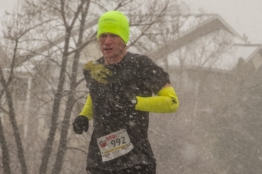Sprints are a lot of fun to watch. Some of the fun for me is that I was not a sprinter. I was put into the distance camp on day one and it’s fascinating to watch how people race short distances. Also, sprints are easy to watch, even for my kids, since the races are anywhere from 9+ seconds to 40+ seconds. In the replays, the broadcasters can go down to minute detail to show the little things that happened during the race.
However, sprints are difficult to follow. In track and field, there are many events throughout the year including indoor meets, Diamond League, the World Championships, etc. In contrast to a professional marathoner who will run two marathons per year, sprinters can run multiple races per day during a track meet. Since recovery time is much shorter when sprinters run the 100M or 200M, they can do more than one event. Multiple events are also partly by necessity. If a track has eight lanes but 32 100M contestants are there, then you need to run qualifying heats to get down to the finals. This creates an incredible amount of data.
In the Rio Olympics, Usain Bolt won gold medals in the 100M, 200M, and as a member of the 4X100M relay. Including all the qualifying heats, he ran a total of nine races. In the same Olympics, Mo Farah, who double gold-medaled in the 5000M and 10000M, ran one qualifying race and final for the 5000M and the 10000M final, a total of three races (Usain Bolt source; Mo Farah source; Olympics source).
Unlike a distance race where runners may be able to analyze a course or tweak strategy based on whether they’re good on hills, have a solid final kick, etc., sprints get down to small details. Leading up to the Rio Olympics in 2016, I read that in the 2012 London Olympics, Usain Bolt took 41 steps in the 100M dash; two of the other competitors took 42.5 and 46 steps (Steps source). In addition, Bolt was not as quick out of the blocks as other sprinters but once he got going, well, we all know what he did in most of his major races. So, when another racer got ahead of Bolt early, they needed to hold off on popping the champagne because his closing speed was ridiculous. Knowing these details and the traits of runners will help create a better understanding of the race once the runners are out of the blocks.
Sprinting is also a very different form of running. They are running but it’s very much a power-based, all-out, quick release form of exertion. Here’s a brief article on sprinting technique for the 100M dash. The arm movement would be the easiest way to highlight the difference between distance running and sprints. If you watch a distance race, the pros have very little arm motion. There may be some towards the end if/when they get into a final kick but largely, they are conserving motion and energy. Sprinters are pumping their arms the entire race to maximize their speed. They need to. When .01 seconds matter, you better be giving it all you’ve got the whole time.
Track and Field News and LetsRun are outstanding sources for following running. Specifically for track and field, they’ll highlight the big meets and notable times, and help break down what it all means. While there is a large amount of data out there for sprints, certain names will come up again and again. Usain Bolt, though retired from track and field now, is about as close to a household name as one can get for a runner but if you’re interested in the sport, others will start to sound familiar. An American sprinter, Noah Lyles, is starting to get a lot of attention.
I also realized that in covering the marathon last week, I neglected to include the other distance events, so I will do those next time and if there’s space, also go over middle distance.
Running food review of the week: (note–gels, bars, chews, and other items affect everyone differently. Try them on a short run before using them for a key training run or race): Hammer Gel Tropical Fruit: This tasted like a more mild version of the Honey Stinger fruit smoothie. Like the vanilla Hammer Gel (and other Hammers that I’ve tried) it has the pleasant thinner texture. If I was going for flavor, I’d go with the Honey Stinger fruit smoothie. If I was looking to take down gel fast while in a race, I’d go with the Hammer Gel.
Sources used:







